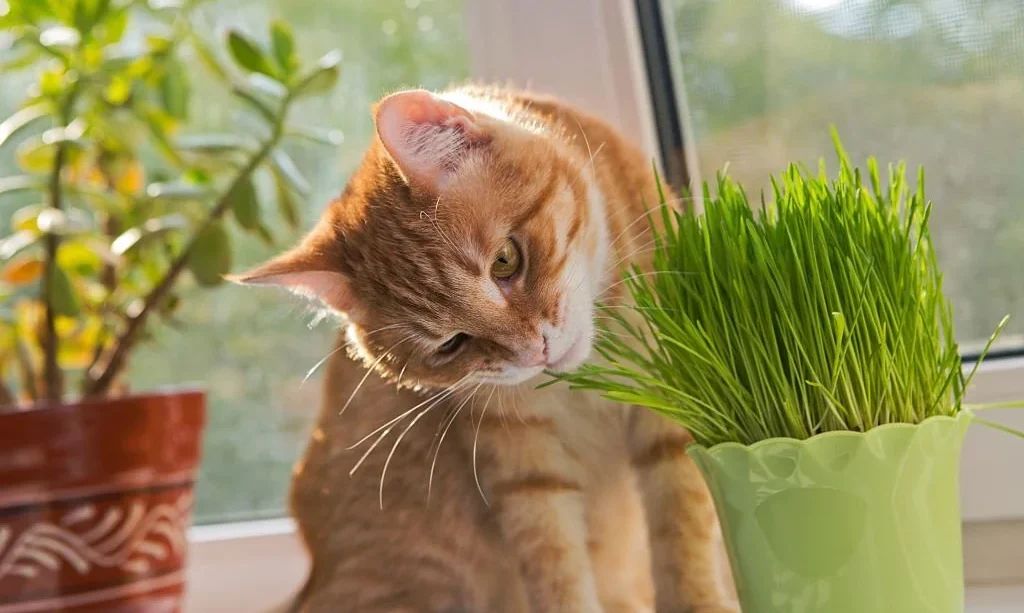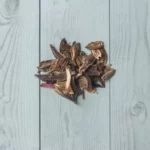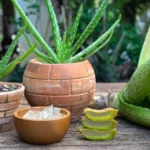Are you a cat owner looking to provide your furry friend with a special treat? Look no further than catnip! Catnip is a fascinating plant that has a magical effect on most cats, inducing playful behavior and providing a sense of relaxation. But did you know that you can easily grow catnip right in the comfort of your own home? In this guide, we’ll take you through the exciting journey of growing catnip indoors and creating a delightful experience for both you and your beloved feline companion.
- SPRING BULBS: These beautiful and bright daffodils are a lovely choice for your Spring garden. Their bold yellow color add so much joy to any space. This flower ships dormant.
- GROWTH: Daffodils grow to be up to 30 inches tall, with a spread of up to 12 inches wide.
- CARE: Daffodils thrive in an environment with at least 6 hours of full sun, and neutral to slightly acidic well-draining soil. When planting, plant the pointed end up about 3-5 inches deep and 5 inches apart. Water thoroughly after planting and continue to water regularly for about three weeks after they bloom. After that, daffodils require no watering until Fall.
- FUN FACT: Daffodils symbolize new beginnings and are one of the first flowers to bloom at the end of winter, showing that Spring is almost here.
- LIVE PLANTS: Our plants are grown exclusively for Deep Roots and The Three Company, shipped fresh directly from our greenhouse to you!
Getting to Know Catnip
Catnip, scientifically known as Nepeta cataria, is a member of the mint family. It is an herbaceous perennial plant that is native to Europe and Asia. Catnip has distinctive heart-shaped leaves with a jagged edge and produces clusters of small, lavender or white flowers. But what makes catnip truly unique is its effect on cats. The aromatic oils in catnip, particularly a compound called nepetalactone, can trigger a range of behaviors in cats, including rolling, rubbing, and playful antics.
Cats are naturally attracted to catnip, and it’s believed that their response is due to inherited instincts. Not all cats are affected by catnip, as sensitivity to its effects is genetic. Approximately 50-75% of cats exhibit a response to catnip, while others remain unaffected. It’s a fascinating plant that can bring joy and entertainment to both you and your feline friend.
Benefits of Growing Catnip Indoors
Growing catnip indoors comes with a range of benefits that make it an appealing choice for cat owners. Here are a few reasons why you should consider growing catnip in the comfort of your home:
- Easy Accessibility: By growing catnip indoors, you have easy access to this special plant whenever you want. You can harvest fresh catnip leaves for your cats at any time, ensuring that they have a steady supply of their favorite treat.
- Safe and Controlled Environment: Indoor cultivation allows you to create a safe and controlled environment for your catnip plants. You can avoid exposure to harmful chemicals or pesticides, ensuring that the catnip you offer your cats is free from any potential contaminants.
- Space Efficiency: Growing catnip indoors is an excellent solution if you have limited outdoor space or live in an apartment. It allows you to cultivate catnip plants even in small areas, such as windowsills, balconies, or kitchen counters.
- Year-round Availability: Indoor gardening enables you to grow catnip all year round, regardless of the season. You don’t have to worry about waiting for the right time to plant or harvesting catnip only during specific months. Your cats can enjoy their favorite herb anytime they desire.
- SUPERIOR INDOOR PLANT FERTILIZER – MARPHYL Marine Phytoplankton is ideal as an outdoor and indoor plant fertilizer. It’s an excellent vegetable fertilizer, houseplant fertilizer, and lawn fertilizer. It’s great for your garden, greenhouse, and hydroponics. Enjoy gorgeous, colorful blooms with this exceptional flower food. Enhance soil quality and watch your trees, shrubs, vines, grass, plants, flowers, and vegetables thrive.
- NATURAL INDOOR PLANT FOOD – Marine Phytoplankton are Microalgae full of nutrients, vitamins, and minerals. It’s so much more than your average liquid plant fertilizer. MARPHYL’s fertilizer for indoor plants and outdoor plants, grasses, trees, flowers and more, provides an astounding array of nutritional elements. Packed with vitamins, minerals, essential fatty acids, DHA, EPA, amino acids, chlorophyll, and a vast spectrum of phytochemicals, so your lawn, garden, and greenhouses will flourish
- ORGANIC & SUSTAINABLE – Our Liquid Marine Phytoplankton Soil Enhancer is an organic, all purpose plant food that is harvested 100% naturally. It’s vegan, non-toxic, non-GMO & sustainably made with no preservatives making it safe for vegetable gardening, ground water, and pets. It replenishes your soil on a regular basis to ensure the continued growth and beauty of your vegetation. Our organic plant fertilizer will meet your every need and provide a safe environment for all gardening.
- MIRACULOUS & BENEFICIAL – Found in oceans across the world, marine phytoplankton are micro algae that infuse your plants, trees, grasses, and more with everything they need for health and longevity. High in potassium, nitrogen, and phosphorus as well as calcium and magnesium for lush foliage. Your lawn & garden will be the envy of the neighborhood, and your indoor plants will brighten your home.
- EASY TO USE WATER SOLUBLE FERTILIZER – Simply mix a 1:20 ratio of our liquid plant fertilizer with water. Once in the water, stir, and then pour onto the plants. Perfect for use in small and large sprayers. Recommended use is every two weeks. You’ll see the difference after just one application!
How to Grow Catnip Indoors
Now that you’re excited about growing catnip indoors, let’s dive into the steps to get you started:
- Choosing the Right Container and Soil: Select a pot or container that is at least 6-8 inches deep with good drainage. Use well-draining potting soil that is rich in organic matter.
- Sowing Catnip Seeds or Transplanting Seedlings: You have the option to start catnip from seeds or purchase seedlings from a garden center. Sow the seeds or transplant the seedlings into the prepared container.
- Proper Lighting and Temperature Requirements: Place your catnip plant in a location that receives at least 6-8 hours of direct sunlight or provide supplemental grow lights if needed. Catnip prefers moderate temperatures around 70-75°F (21-24°C).
- Watering and Humidity Needs: Keep the soil consistently moist but not overly saturated. Allow the top inch of soil to dry out between waterings. Catnip prefers moderate humidity levels, so misting the leaves occasionally can be beneficial.
- Fertilizing Catnip Plants: Feed your catnip plants with a balanced organic fertilizer once a month during the growing season. Follow the package instructions for the appropriate dosage.
By following these simple steps, you’ll be on your way to cultivating thriving catnip plants that will delight your cats with their enticing aroma and playful effects.
Catnip Care and Maintenance
Taking care of your indoor catnip plants is essential to ensure their healthy growth and vibrant leaves. Here are some tips for catnip care and maintenance:
- Pruning and Harvesting: Regularly prune your catnip plants to encourage bushier growth. Trim off any leggy or wilted stems. You can also harvest catnip leaves for your cats by gently snipping them off the plant. Leave some leaves behind for the plant to continue growing.
- Watering: Keep the soil evenly moist, but avoid overwatering, as it can lead to root rot. Check the moisture level by sticking your finger about an inch into the soil. If it feels dry, it’s time to water. If it’s still slightly damp, wait a bit longer.
- Pest Control: Monitor your catnip plants for pests such as aphids or spider mites. If you notice any infestations, gently wash the leaves with a mild soap and water solution or use organic insecticidal soap to control the pests.
- Providing Support: As your catnip plants grow taller, they may benefit from support. Place small stakes or plant supports near the stems to prevent them from bending or breaking under their own weight.
Harvesting and Using Catnip
When your catnip plants have reached a desirable size, it’s time to harvest and share the joy with your feline friends. Here’s how to harvest and use catnip:
- Harvesting Catnip Leaves: Select mature leaves from the plant, preferably before it begins to flower. Gently pinch or cut the leaves from the stems. You can use them fresh or dry them for later use.
- Drying Catnip: To dry catnip, tie a bunch of stems together and hang them upside down in a cool, dry place with good air circulation. Once completely dry, remove the leaves from the stems and store them in an airtight container.
- Using Catnip with Cats: Offer catnip leaves to your cats as a special treat. You can sprinkle dried catnip leaves on toys, scratching posts, or bedding to encourage play and provide sensory enrichment.
Conclusion
Growing catnip indoors is an enjoyable and rewarding experience that allows you to provide your cats with a delightful and stimulating herb. By following the care and maintenance tips, you can cultivate healthy catnip plants that will continue to provide joy to your cats for months to come. So get started on your indoor catnip garden and witness the happiness it brings to your furry companions.





